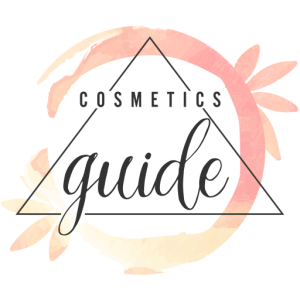It might seem that the topic of skin types and its care has been maximally exploited. And yet, it turns out that the latest division of skin types is a surprise even for me. 🙂
If you still think that there’s only normal, dry and oily (or possibly a combination) skin type, then you are mistaken. Here is the categorization due to the skin problems we often must deal with.
Do you know that you can have problematic skin, aging-prematurely, hyperpigmentation or interactive skin?
It is worth devoting a moment to analyze this division and find out what is the type of skin you struggle with. It may turn out that it needs special care. I would like to make it easier for you to get to know your skin and its needs better, hence today’s article. Enjoy it!
PROBLEMATIC SKIN
Also described as: seborrhoeic, oily and acne
The most problems connected with the skin are unfortunately due to the fact that the work of sebaceous glands is disturbed. Oftentimes, we cause it ourselves, by removing the layer of protective sebum from our skin with the use of soaps and other detergents. Skin problems can manifest itself in various ways.
Problematic skin is, among others acne skin, but also excessively oily skin in the T zone. What is more, the symptoms may have varying degrees of severity, but usually do not appear earlier than after the age of 20 (juvenile acne is an exception with a completely different basis).
Characteristic features:
- enlarged pores,
- acne
- purulent breakouts,
- inflammation,
- post-inflammatory hyperpigmentation,
- a tendency to scars,
- uneven color.
INTERACTIVE SKIN
Also described as: sensitive, allergic, couperose,
Skin sensitivity is not a normal symptom. Naturally, it is designed to deal with various types of microorganisms and external agents on its own. It becomes interactive only under the influence of genes, chronic stress, drugs, atmospheric conditions, weakening of health, poor care.
How is it possible that normal skin suddenly becomes hypersensitive? Under the influence of the above-mentioned factors, the protective skin barrier is broken. In other words, we cross a certain limit beyond which the skin cannot cope, and the only reaction is an allergic reaction and irritation.
Characteristic features:
- sensitivity to stimuli,
- redness,
- erythema,
- discernible heat,
- delicacy,
- visible capillaries,
- frequent irritation.
SKIN WITH HYPERPIGMENTATION
Also described as: discolored, dull,
Discolorations are not always a sign that we are dealing with skin with excess melanin secretion. Sometimes they appear as a result of certain skin problems, eg they stay after acne treatment. In fact, finding the cause of skin discoloration is the most important thing.
Hyperpigmentation skin is the type where uneven melanin distribution occurs. Usually, this is a defensive reaction of the body, e.g. to UV rays. Dye is not evenly distributed, which results in changes such as freckles and pigmentation spots, as well as sunspots.
Characteristic features:
- freckles,
- sunspots,
- other discolorations.
AGING SKIN
Also described as: mature, atrophied
The skin ages just like any other part of our body. Signs of aging include: wrinkles, loss of elasticity, lentigines, etc. The problem arises when the cells start to age more quickly than they should and thus, the first, unexpected wrinkles appear.
Damaged skin is the one that shows the signs of premature aging most often. What does it mean? Tired, weakened skin is aging because some layers of the epidermis are damaged, keratosis occurs, as well as elastin and collagen fibers are damaged.
Characteristic features:
- dropping face oval,
- loss of flexibility,
- wrinkles around the eyes,
- dull complexion and age spots,
- roughness, dryness, dullness,
- breaking blood vessels,
- wrinkles and furrows.


Leave a Reply